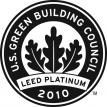Polyurethane Core Structural Insulated Panels Added to the IRC
FOR IMMEDIATE RELEASE
October 13, 2008
Efforts of SIPA, CPI, PIMA and APA result in adoption of polyurethane core panels into the International Residential Code
September 21, 2008 – The International Code Council voted to adopt structural insulated panels (SIPs) with polyurethane cores into the 2009 International Residential Code (IRC) at their Final Action Hearings in Minneapolis, MN. Inclusion in the building code will allow builders using polyurethane core SIPs to build homes without the approval of a licensed engineer if the homes fall within the applicability limits of the code.
In May of 2007, SIPs with two other types of foam core materials, expanded polystyrene and extruded polystyrene, were added to IRC’s 2007 Supplement. The recent code change adds polyurethane as an accepted core material to the current prescriptive provisions for SIPs in the IRC. As a result, all three foam types will be included in the 2009 IRC.
In order to qualify under the prescriptive requirements of the IRC, the polyurethane foam used in SIPs must meet certain minimum material properties that are described in the new code language. These properties were developed through a collaborative effort between the Structural Insulated Panel Association (SIPA), the Center for the Polyurethanes Industry (CPI), the Polyisocyanurate Insulation Manufacturers Association (PIMA), and APA.
SIPA’s Executive Director Bill Wachtler called the acceptance an “important step” in SIPA’s code advocacy efforts and thanked SIPA’s partners in the endeavor.
“This code change was the result of lots of time and effort put forth by the associations involved and also by SIPA members that donated time and materials,” Wachtler said. “SIPA has made another important step forward in building code acceptance and we plan to continue to push for broader acceptance for SIPs.”
CPI submitted the proposal with support from PIMA, SIPA’s Technical Committee and APA, who conducted the testing at their Research Center in Tacoma, WA.
Lorraine Ross, Intech Consulting Inc, a code consultant to both CPI and PIMA, stated, “The inclusion of SIPs in the 2009 International Residential Code is a significant win for the SIP industry, a win that only occurred because all industry associations worked together for a common goal. IRC recognition of polyurethane and polyiso insulation cores also provides a great deal of flexibility for SIP manufacturers.”
Many SIPA members also contributed to the development of the code change proposal, including BASF Corporation, Dow Chemical Company, Ainsworth Lumber Company, Better Building Products, Murus Company, and Winter Panel.
Several other minor code change proposals amending the SIP requirements currently in the IRC were submitted by APA for SIPA’s Technical Committee. All the proposals were accepted.
“The four additional successful SIPs code changes add clarification to the original package adopted in the 20007 supplement,” said Ed Keith, APA’s Codes and Engineering Manager. “A number of roadblocks have been removed that permit the use of taller SIP walls and the attachment of gypsum wall board directly to the inside facing. All in all, Section R614 of the IRC has been strengthened and made easier to use.”
All proposals approved during the Final Action Hearings will be included in the 2009 IRC, scheduled to be published in March of 2009. The IRC is currently in use at the state or local level in 46 states plus Washington DC. However, local jurisdictions will determine when new versions of the IRC will be put in effect. For more information on the IRC and other building codes, visit the International Code Council’s website at www.iccsafe.org.

